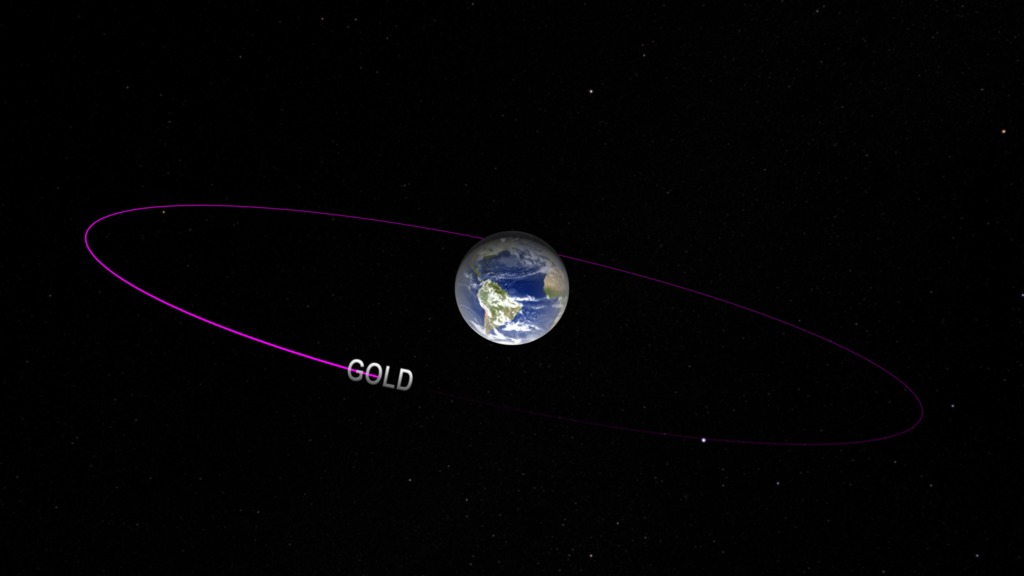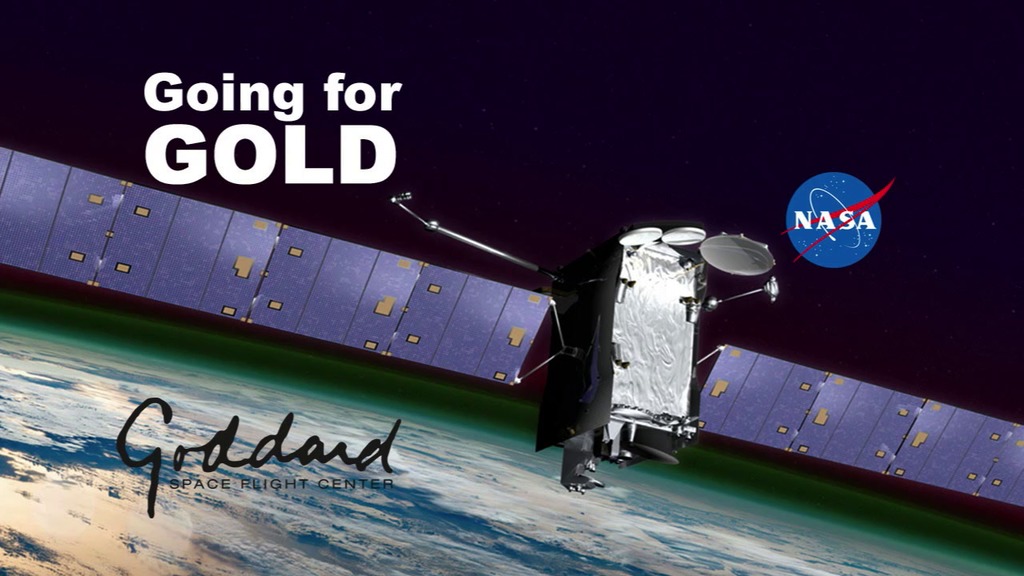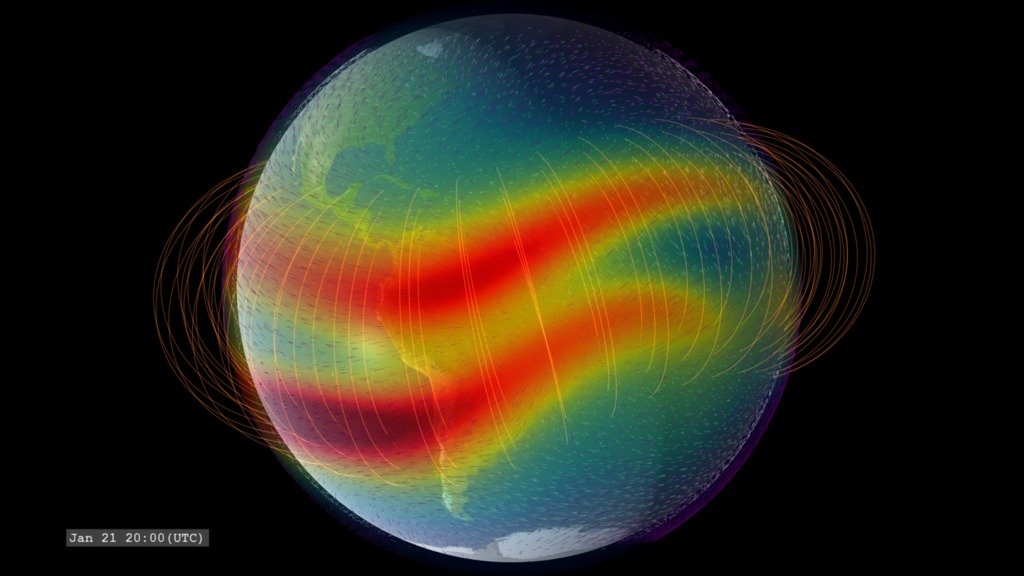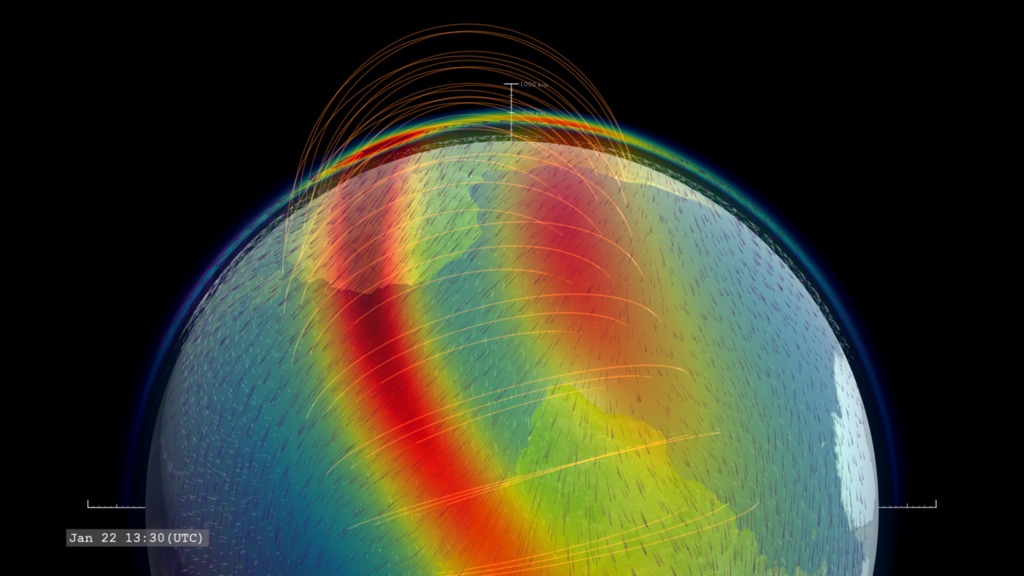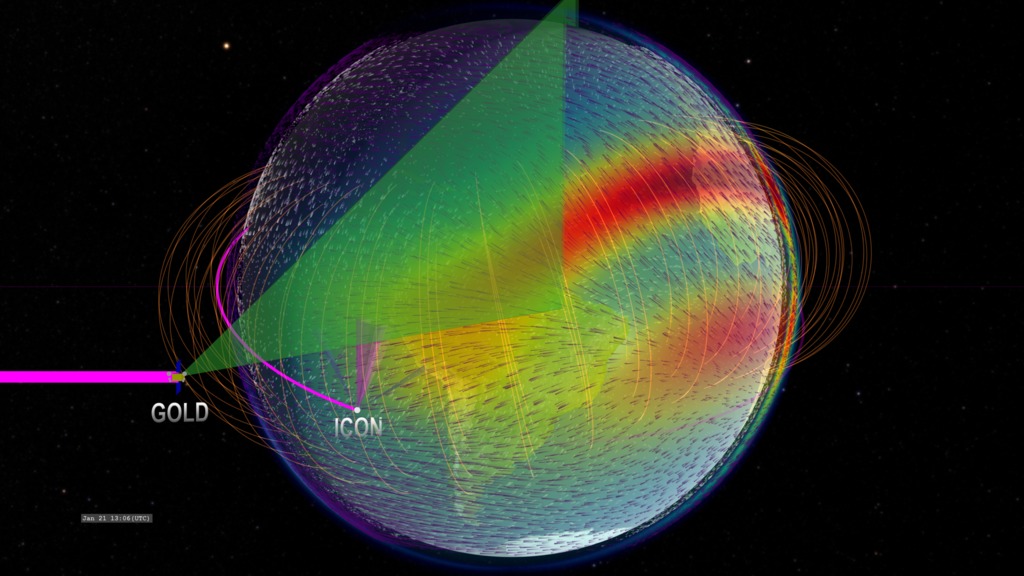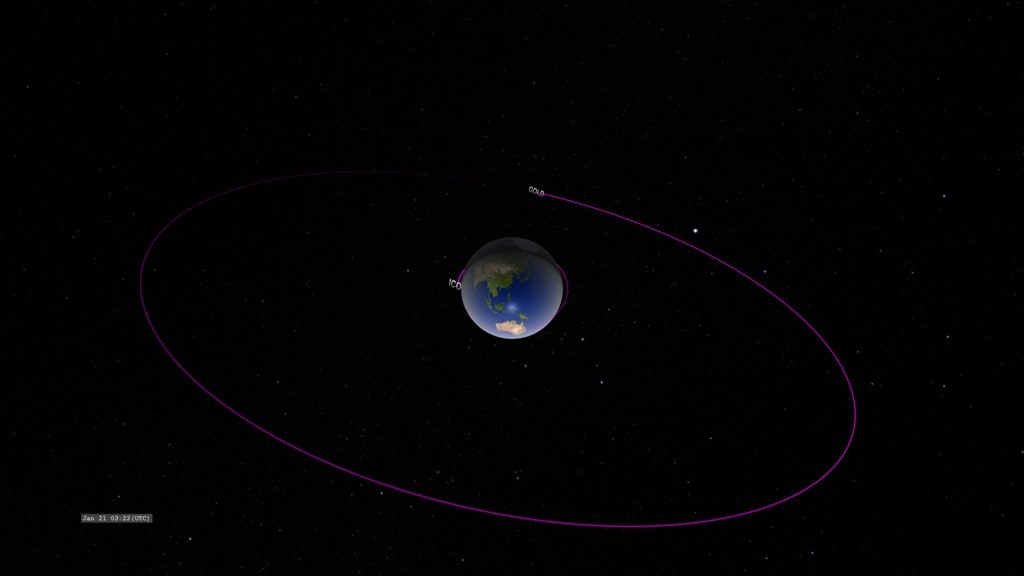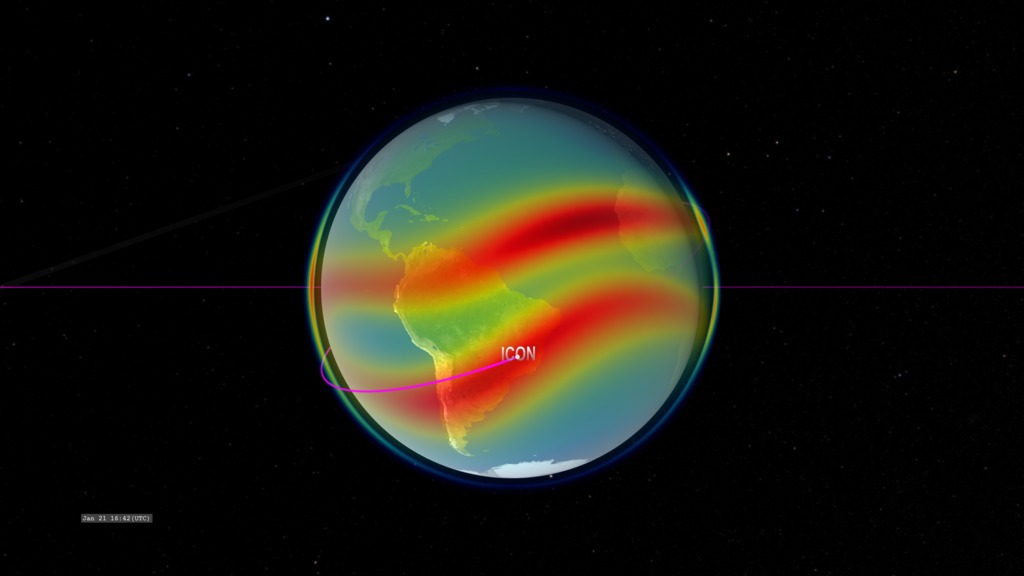GOLD Resources
The Global-scale Observations of the Limb and Disk, or GOLD, mission is designed to explore the nearest reaches of space. Capturing never-before-seen images of Earth’s upper atmosphere, GOLD explores in unprecedented detail our space environment — which is home to astronauts, radio signals used to guide airplanes and ships, as well as satellites that provide communications and GPS systems. The more we know about the fundamental physics of this region of space, the more we can protect our assets there.
Gathering observations from geostationary orbit above the Western Hemisphere, GOLD measures the temperature and composition of neutral gases in Earth’s thermosphere. This part of the atmosphere co-mingles with the ionosphere, which is made up of charged particles. Both the Sun from above and terrestrial weather from below can change the types, numbers, and characteristics of the particles found here — and GOLD helps track those changes.
Activity in this region is responsible for a variety of key space weather events. GOLD scientists are particularly interested in the cause of dense, unpredictable bubbles of charged gas that appear over the equator and tropics, sometimes causing communication problems. As we discover the very nature of the Sun-Earth interaction in this region, the mission could ultimately lead to ways to improve forecasts of such space weather and mitigate its effects.

Artist rendering of SES-14 satellite, the spacecraft that will carry GOLD as NASA's first ever hosted payload.
Credit: NASA/CIL/Chris Meaney
Canned interview with NASA Scientist Elsayed Talaat looking off camera. Soundbites are separated by slates.
Full title: Elsayed Talaat, Heliophysics Chief Scientist, NASA Headquarters, Washington
Complete transcript available.
Canned interview with NASA Scientist Sarah Jones looking off camera. Soundbites are separated by slates.
Full title: Sarah Jones, Research Scientist, NASA's Goddard Space Flight Center
Complete transcript available.
Canned interview with Scientist Katelynn Greer looking off camera. Soundbites are separated by slates. Includes transcript of soundbites.
Full title: Katelynn Greer, Research Scientist, Laboratory for Atmospheric and Space Physics at the University of Colorado Boulder
Complete transcript available.
Bright swaths of red and green, known as airglow, are visible in this time-lapse view of Earth's limb captured from the International Space Station. Airglow occurs when gases in the upper atmosphere become charged by the Sun's radiation, emitting light. By measuring the light from airglow, ICON and GOLD will learn a lot about the neutral and charged particles in the upper atmosphere.

This infographic compares the GOLD and ICON missions, which together will provide the most ever comprehensive observations of the ionosphere.
A PDF is available to download at the bottom of the page.
Credit: Mary P. Hrybyk-KeithThis infographic compares the GOLD and ICON missions, which together will provide the most ever comprehensive observations of the ionosphere.
A PDF is available to download at the bottom of the page.
Credit: Mary P. Hrybyk-Keith
Part 1/2: A flyer with information on the GOLD mission’s science goals, instrument and orbit.
A PDF is available to download at the bottom of the page.
Credit: Mary P. Hrybyk-Keith

Part 2/2: A flyer with information on the GOLD mission’s science goals, instrument and orbit.
A PDF is available to download at the bottom of the page.
Credit: Mary P. Hrybyk-Keith
Slug: NASA GOLD Mission to Image Earth’s Interface to Space
On Thursday, Jan. 25, 2018, the Global-scale Observations of the Limb and Disk, or GOLD, mission launches to explore Earth’s boundary to space. Capturing never-before-seen images of Earth’s upper atmosphere, GOLD will help us understand the region that is home to astronauts, radio signals used to guide airplanes and ships, as well as satellites that provide communications and GPS systems.
TRT: 6:31
Edited B-roll RT: :52
Interview Excerpts RT: 1:02
Additional B-Roll RT: 3:05
Super(s): NASA
Center Contact: Karen Fox, karen.c.fox@nasa.gov, 301-286-6284
HQ Contact: Dwayne Brown, dwayne.c.brown@nasa.gov, 202-358-1726
For more information: www.nasa.gov/GOLD
For More Information
Credits
Please give credit for this item to:
NASA's Goddard Space Flight Center
-
Scientists
- Richard Eastes (University of Colorado Boulder)
- Elsayed R. Talaat (NASA/HQ)
- Sarah L. Jones (NASA/GSFC)
- Katelynn Greer (University of Colorado Boulder)
-
Producers
- Karen Fox (ADNET Systems, Inc.)
- Joy Ng (USRA)
- Genna Duberstein (USRA)
-
Writers
- Kathalina Tran (SGT)
- Sarah Frazier (ADNET Systems, Inc.)
-
Data visualizer
- Tom Bridgman (Global Science and Technology, Inc.)
-
Animator
- Chris Meaney (KBR Wyle Services, LLC)
-
Graphic designer
- Mary P. Hrybyk-Keith (TRAX International)
-
Videographers
- Tom Mason (LASP)
- Joy Ng (USRA)
- Andrew Gelfman (NASA/HQ)
Release date
This page was originally published on Wednesday, January 24, 2018.
This page was last updated on Wednesday, May 3, 2023 at 1:47 PM EDT.
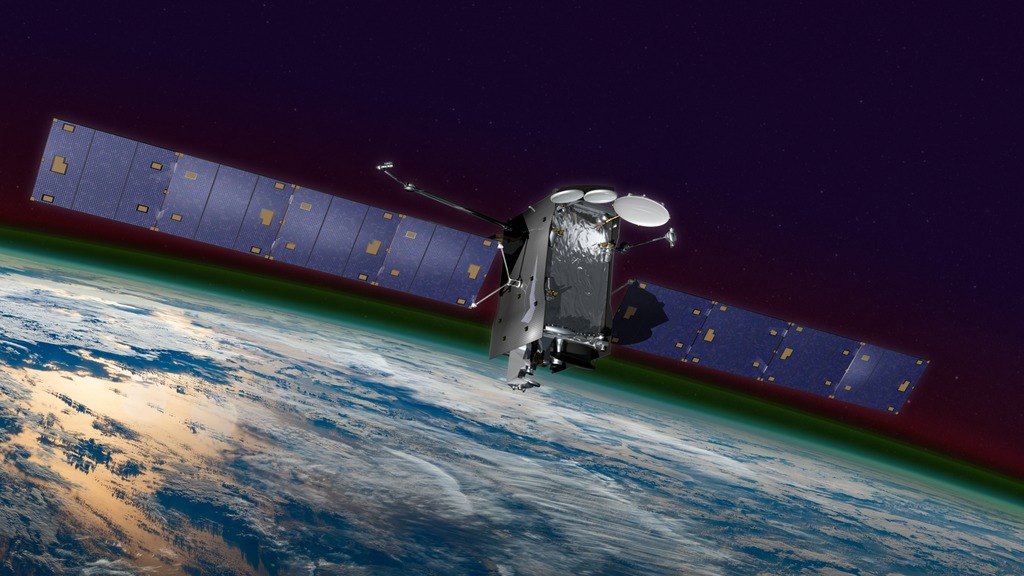
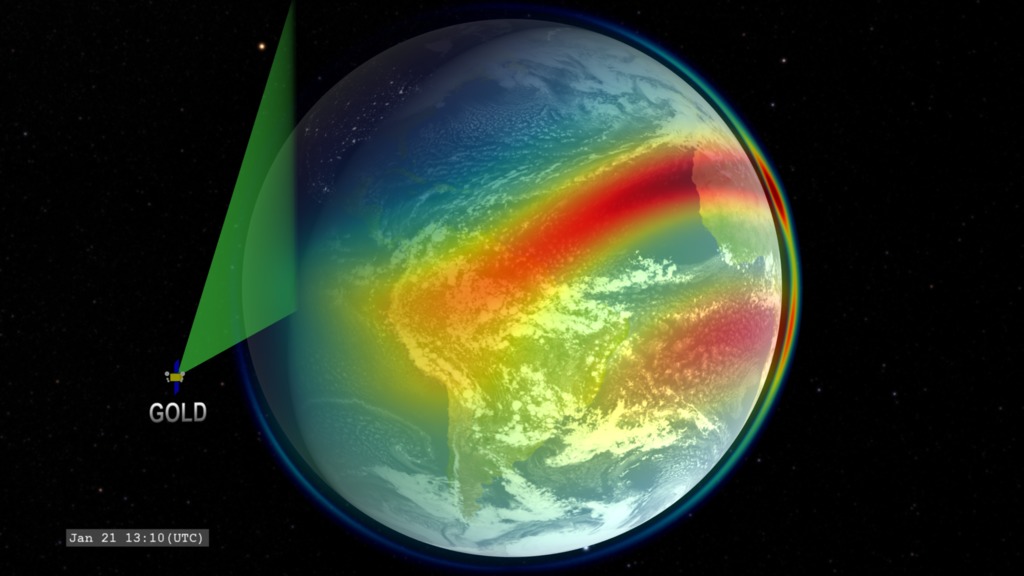
![Complete transcript available.Music credits: 'Faint Glimmer' by Andrew John Skeet [PRS], Andrew Michael Britton [PRS], David Stephen Goldsmith [PRS], 'Ocean Spirals' by Andrew John Skeet [PRS], Andrew Michael Britton [PRS], David Stephen Goldsmith [PRS] from Killer Tracks.Watch this video on the NASA Goddard YouTube channel.](/vis/a010000/a012800/a012817/GOLDOverview_YouTube.00001_print.jpg)
